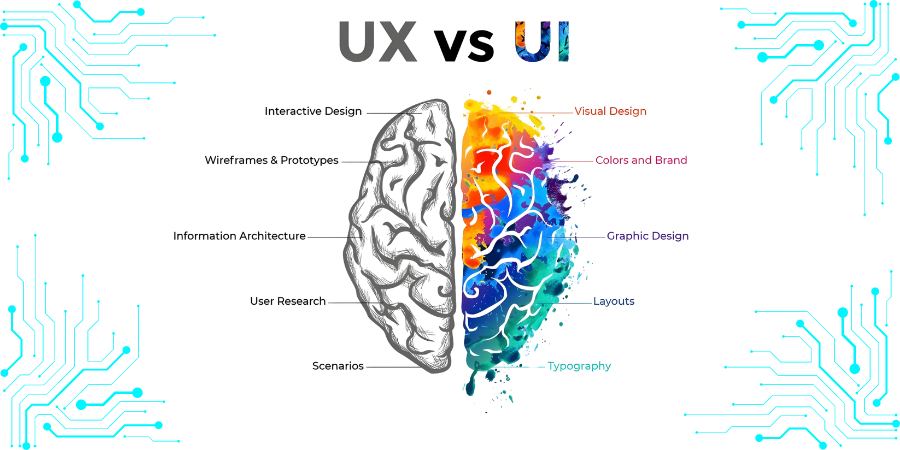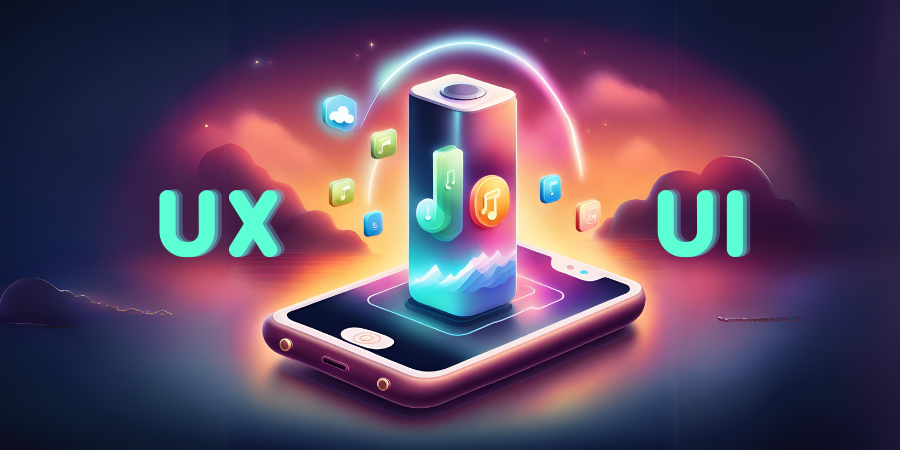What is UX/UI Design?
User Experience (UX) and User Interface (UI) design are integral components of the digital landscape, working synergistically to foster engaging interactions between users and products. UX design encompasses the overall experience a user has when they engage with a product or service. This includes not only the usability and functionality of the product but also the emotional response it evokes. A successful UX design prioritizes accessibility, ensuring that all users, regardless of ability, can navigate and enjoy a seamless interaction. It also aims to create pleasure during the use of the product, establishing satisfaction that can lead to loyalty and repeat usage.
Conversely, UI design pertains specifically to the visual and interactive elements of a product, such as buttons, icons, colors, typography, and layouts. The UI is often seen as the bridge connecting the user to the functionality provided by the UX. A well-crafted UI enhances a user’s ability to navigate a product intuitively, making the entire experience more satisfying. This relationship between UX and UI highlights the importance of coherence; an elegant UI cannot substitute for a poor UX, just as a great UX can be undermined by a confusing or unattractive UI.
Examples of outstanding UX/UI designs include popular platforms like Airbnb and Spotify. Airbnb provides an intuitive interface that simplifies the process of searching for accommodations while ensuring that users feel a sense of assurance through detailed property descriptions and ratings. Similarly, Spotify’s user interface combines aesthetically pleasing elements with functional navigation, allowing users to discover and enjoy music without effort. In today’s tech industry, the significance of combining effective UX and UI design cannot be overstated, as it directly impacts user satisfaction and retention, ultimately influencing a product’s success.
Differences Between UX and UI
Understanding the distinctions between User Experience (UX) and User Interface (UI) design is crucial for anyone involved in the technology and design sectors. While both UX and UI are integral components of product design, they serve distinct purposes and require different skill sets. UX design focuses primarily on the overall journey and experience that the user has when interacting with a product or service. It encompasses research, analysis, wireframing, prototyping, and testing to ensure that the end-user finds the product accessible, usable, and enjoyable. The primary goal of UX is to foster satisfaction by addressing user needs and behaviors effectively.
On the other hand, UI design pertains to the visual elements and interactive components that the user engages with. This includes aspects such as layout, color schemes, typography, buttons, and icons. The UI designer’s role is to create visually appealing interfaces that not only attract users but also enhance the functionality of the product. UI is about ensuring that users can quickly understand and navigate through the product, achieving their goals without confusion or frustration.
While UX and UI may seem to overlap, their collaboration is essential for a successful product. For instance, strong UI design relies on insights gained from UX research, and effective UX needs visually appealing and intuitive UI to create a seamless user journey. It is vital for design teams to cultivate strong lines of communication and collaboration between UX and UI designers to ensure that both aspects work harmoniously. By understanding their distinct roles and the ways they complement each other, teams can deliver products that not only meet user expectations but also provide delightful experiences. This collaborative approach ultimately leads to a more refined and effective design outcome.

Is UX/UI Design the Future of the Tech Industry?
The increasing significance of user experience (UX) and user interface (UI) design in the tech sector underscores a transformative shift within the industry. As businesses focus on user-centered design strategies, they enhance customer satisfaction, resulting in stronger brand loyalty and improved market presence. Recent market research indicates that organizations prioritizing UX/UI design are witnessing notable growth in user engagement and conversion rates. This trend is not merely a fleeting preference; it reflects an essential evolution in how technology interfaces with users.
The demand for specialized UX/UI designers is anticipated to grow rapidly. Projections suggest that as mobile applications proliferate and e-commerce continues to thrive, the need for effective design practices will only intensify. According to various industry analyses, companies are recognizing that a well-designed user experience can differentiate their offerings in a saturated market. This reality catalyzes an increasing number of organizations to invest significantly in their UX/UI capabilities to meet customer expectations more effectively.
Furthermore, the rise of emerging technologies, such as artificial intelligence (AI) and augmented/virtual reality (AR/VR), is reshaping the landscape for UX/UI professionals. These advancements create new challenges and opportunities, necessitating a continuous adaptation of design strategies. As these technologies evolve, UX/UI designers will play a critical role in ensuring that user interactions remain intuitive and engaging. This shift emphasizes the relevance of UX/UI professionals in the modern tech environment, where seamless user experiences are paramount.
In conclusion, the future of the tech industry appears inexorably tied to the principles of UX/UI design. As organizations increase their focus on user-centered approaches, the role of UX/UI designers will only become more integral to achieving business success and fostering longer-lasting customer relationships.
Tools Used by UX/UI Designers
UX/UI designers rely on a variety of specialized tools to streamline their design workflows and enhance the user experience. These tools can be broadly categorized into three main functionalities: prototyping, wireframing, and user testing. Each category includes popular applications that assist designers in different aspects of their projects.
Prototyping tools, such as Adobe XD and Figma, allow designers to create interactive mockups of interfaces. Adobe XD is known for its intuitive interface and powerful vector editing capabilities, making it ideal for designing high-fidelity prototypes. Figma, on the other hand, sets itself apart with its cloud-based platform, enabling real-time collaboration among team members, which is crucial for effective design iterations.
Wireframing tools like Sketch and InVision facilitate the initial stages of design by allowing designers to visualize the layout and structure of a user interface. Sketch is particularly favored in the design community for its simplicity and robust plugin ecosystem that enhances its functionality. InVision complements wireframing with features that enable users to turn static designs into interactive prototypes, making it easier to present ideas to stakeholders.
Another significant aspect of the design process is user testing. Tools such as UserTesting and Lookback provide comprehensive platforms for gathering valuable feedback from real users. These tools enable designers to observe user interactions and gather insights that inform future design decisions. The integration of feedback throughout the design journey ensures that interfaces meet user needs effectively.
Furthermore, collaboration tools like Slack and Trello enhance communication within design teams and help in managing project timelines. Selecting the right combination of tools is essential for improving productivity in UX/UI design, as each tool serves a unique purpose that contributes to the overall success of the project.

Your passion for your subject matter shines through in every post. It’s clear that you genuinely care about sharing knowledge and making a positive impact on your readers. Kudos to you!